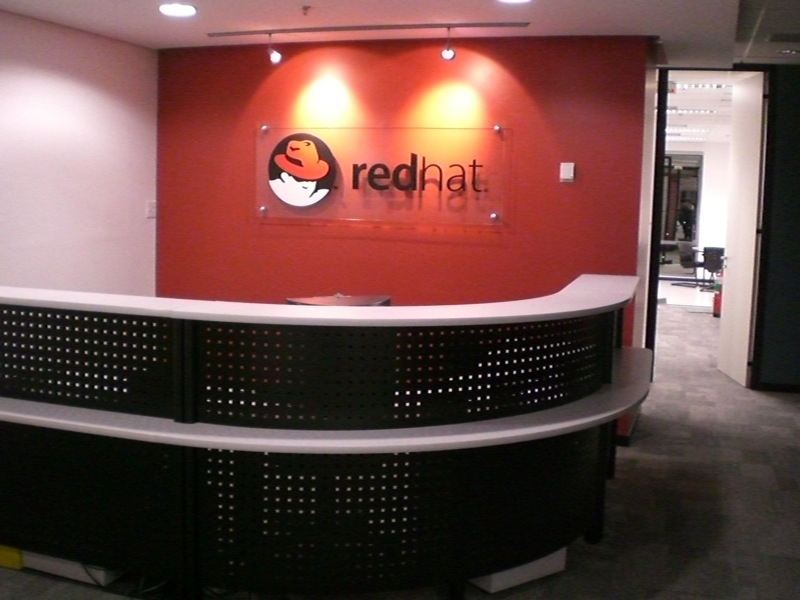
Great news,% username%! Red Hat has made its corporate distribution RHEL free. True, there are a number of rules, following which, this distribution can be used free of charge, that is, for free
Previously, RHEL was also free to use, but there were many restrictions. Now some of them have been removed, and some have been expanded. About new opportunities - under the cut.
Red Hat Developer Program Expanded
Previously, under the Red Hat Developer program, the distribution was free to use, but only if installed on one virtual machine or one computer. It was allowed to use the distribution kit exclusively for software development and debugging. Installing a distribution for production deployments, building final products, testing with multiple participants, or providing enterprise continuous integration systems required a paid subscription.
Now the rules have changed dramatically . So, now entire development teams can participate in the program, and not just one person. In addition, the distribution kit can be deployed not only on PCs, but also on servers and even in the "clouds".
The best part about this is that the free version is no different from the paid one. If you think that the paid and free versions have different conditions for receiving updates, then this is not the case, everything is exactly the same.
The only limits are the number of copies of RHEL that a single development team can install. This figure should not exceed 16, and there are no ways to increase the limit. In addition, the company's technical support is only available to paying Red Hat customers.
How do I become a member of the program? You just need to get an account on the Red Hat portal. Moreover, it is not necessary to register - you just need to log in through your profile on Facebook, Twitter and GitHub. Everything is very simple and, probably, pleasant.
Previously, registration implied the fulfillment of all formalities, including the indication of the name, employer, email, phone number and address.
Why have conditions changed?
It all started after the company abandoned development of the CentOS 8 distribution, which was announced late last year. Plus, the developers have shortened the support period for the distribution. Initially it was 2029, now it is December 31, 2021. In other words, the updates will end in less than a year.
In general, not all that bad, since instead of CentOS 8, CentOS Stream is proposed. If the previous distribution received updates quite rarely, then with Stream it is a completely different story. Updates for it are released much more often, but here the patches are tested by the developers themselves, so the stability of CentOS Stream Red Hat is questionable.
It is clear that many users were dissatisfied with such actions of the company. Almost immediately after the announcement of the company about the abandonment of the distribution kit, a wave of protests arose on social networks and messengers. You can understand the users, because we are not talking about several machines that are at home under the control of the distribution kit. Many businesses have installed and configured their CentOS 8 based networking infrastructure with years of support.

And when it all turned into a pumpkin, the company's customers opposed this approach. Stream did not suit users for the same reason: CentOS as a stable system was used in many companies to support production processes. Stream as an alternative is not suitable here, since the stable operation of the entire computer infrastructure is a guarantee of the continuity of these processes.
Search for alternatives
A number of corporate and ordinary users immediately announced plans to move to alternative solutions. And they were not slow to appear. Greg Kurtser, founder of CentOS, announced earlier this year that he plans to fork RHEL called Rocky Linux. The release is scheduled for the second quarter of 2021. They plan to use Koji, Mock and MBS from Fedora Linux for build processes.
Cloudlinux, which offers its own alternative, spoke about similar plans. The company is ready to invest in it $ 1 million a year. This distribution is called Almalinux , and it should appear in the first quarter of this year. Distribution characteristics:
- The basis is the Red Hat Enterprise package base.
- Full binary compatibility with RHEL.
- Easy and transparent migration from CentOS 8.
- Supported updates until 2029.
- Free model for users.
- Decision making functions are delegated to the community, similar to the Fedora platform.
There is also Oracle Linux. Oracle has been developing its own RHEL clone for 14 years. Its advantages:
- 100% compatible with RHEL at the binary level;
- designed for hybrid cloud;
- automatic Linux update without rebooting;
- optimized to run Oracle software.
What does the updated software from Red Hat give?
It allows you to meet the needs of CentOS users, namely - a stable free distribution that just works, getting technical support.
Now CentOS Stream is positioned as an "upstream" for RHEL, i.e. it will test packages before being included in RHEL releases. This, in turn, will allow anyone in the community to help develop the distribution. Moreover, it will be possible to control the changes that developers are preparing to introduce into the distribution.
